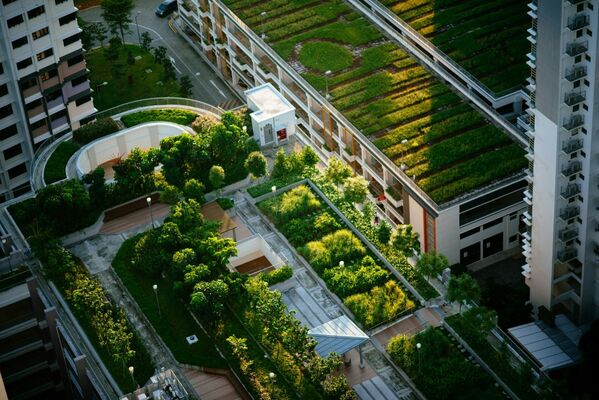Rooftop Gardening: What Will This Trend Do for Urban Areas?

Photo by CHUTTERSNAP on Unsplash
Rooftop Gardening: Enhancing Urban Living
“To plant a garden is to dream of tomorrow.” —Audrey Hepburn
Rooftop gardening is transforming urban areas by providing green spaces that mitigate the adverse effects of city living. These gardens help reduce smog and urban heat islands, improving air quality and creating cooler environments. This cooling effect reduces the need for air conditioning, thus lowering energy consumption and costs. Additionally, rooftop gardens serve as havens for urban wildlife, offering habitats for birds and pollinators, which enhances biodiversity within cities.
Those who love gardening and live in the city have an outlet to grow vegetables, herbs, and flowers with urban gardening. A resident could plant in a community garden, but access to space for these traditional gardens is difficult to find, especially in densely inhabited areas. Throughout large cities in North America and Europe, rooftop gardens are becoming increasingly popular as a suitable option and are also considered as a means to minimize smog and summertime heat buildup. Developing rooftop gardens (as well as community gardening plots) improves the overall quality of life. The benefits include cleaner air, appealing ambiance, and a convenient source for locally grown food.

A Compact Rooftop Garden - Photo by Jenna Beekhuis on Unsplash
"Rooftop gardens" and "green roofs" are often used in the same context, encompassing everything from planters on a terrace to flat-roofed buildings covered with vegetation. In actuality, rooftop gardening refers to urban agriculture, while green roofs are a construction procedure that requires specific building characteristics.
Growing vegetables and herbs in large containers or raised beds is most common for small-scale urban rooftop gardens. Restaurants and homeowners alike are producing crops, and the results are quite satisfactory. However, producing crops on rooftops is challenging due to excessive heat, as sunlight is especially intense, and there are no trees to provide shade and cool the air. Wind speed is often much higher, but windbreaks can be used to mitigate plant stress.
Plants grown on roofs have the same needs as those in the ground; they need water, fertilizer, and good-quality soil. A water source must be provided, and all runoff water is typically captured through a recirculation system. Fertilizer can be preincorporated into the growing medium or injected into the irrigation water either in the form of organic or synthetic water-soluble fertilizer.

A Rooftop Garden Featuring Hanging Plants - Photo by Anh Nguyen on Unsplash
Advantages of urban gardening:
-
Heat buildup reduction:
In the summer, sunlight is absorbed by roofs, making them very hot. The heat radiates back into the air, raising the temperature outside and inside the building, increasing the costs of cooling. The rooftop garden shades the roof, reduces heat retention, and cools the air inside and outside.
-
Rainfall water runoff:
Rooftop gardens can help reduce rainwater runoff (a problem in cities) as the plants use the water to support growth.
-
Locally grown produce:
The interest in buying locally grown produce is increasing in popularity. Vegetable plants for rooftop gardening should be small and compact. Vegetables and flowers are being downsized to fit into new lifestyles and space limitations. The smaller varieties of plants that do not outgrow their space have exploded in popularity and number. For example, container-sized blueberries and raspberries are very popular, as they are very easy to grow.
- Fresh food available all year round within a short distance: The availability of fresh produce almost all year round is a strong feature for urban developers. Many grocery store chains are offering local produce to meet the demand.
Creative Ideas and Future Potential

Modern Buildings with Expansive Rooftop Gardens - Photo by CHUTTERSNAP on Unsplash
The potential for rooftop gardens extends beyond individual homes to commercial buildings and public spaces. Innovative designs can transform rooftops into multifunctional areas, incorporating seating, pathways, and even greenhouses for year-round gardening. These spaces can serve as venues for social gatherings, educational workshops, and community events, further integrating nature into urban life. Rooftop gardens can also support local economies by creating jobs in gardening, landscaping, and urban agriculture sectors.
As cities continue to grow, rooftop gardens will play an increasingly vital role in promoting sustainable living. They offer a practical solution to environmental challenges while enhancing urban aesthetics and community well-being. Encouraging the adoption of rooftop gardening through incentives and supportive policies can accelerate its integration into urban planning. By embracing this green trend, cities can become more resilient, sustainable, and enjoyable places to live.
For more information on how to implement rooftop gardening and determine which plants are right for your space, contact Arborist Now!
Originally published on January 16, 2016.





